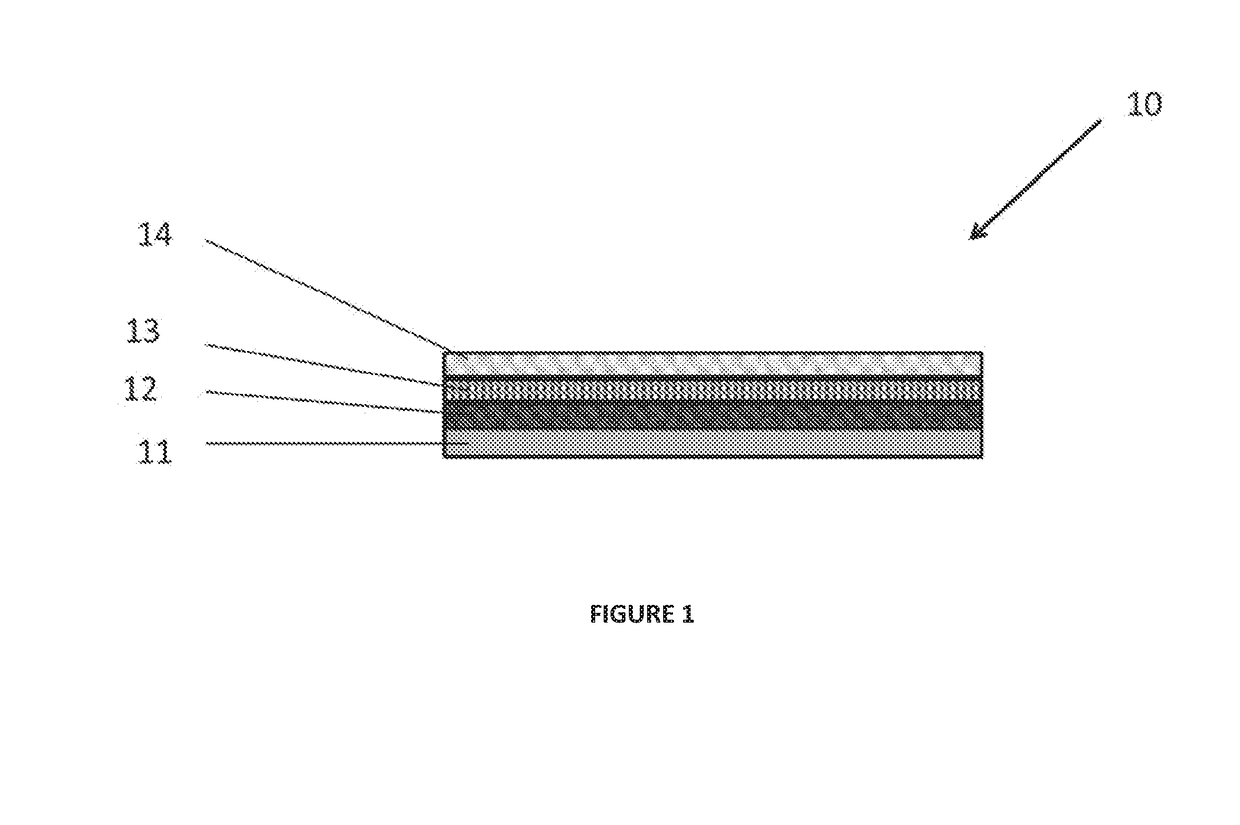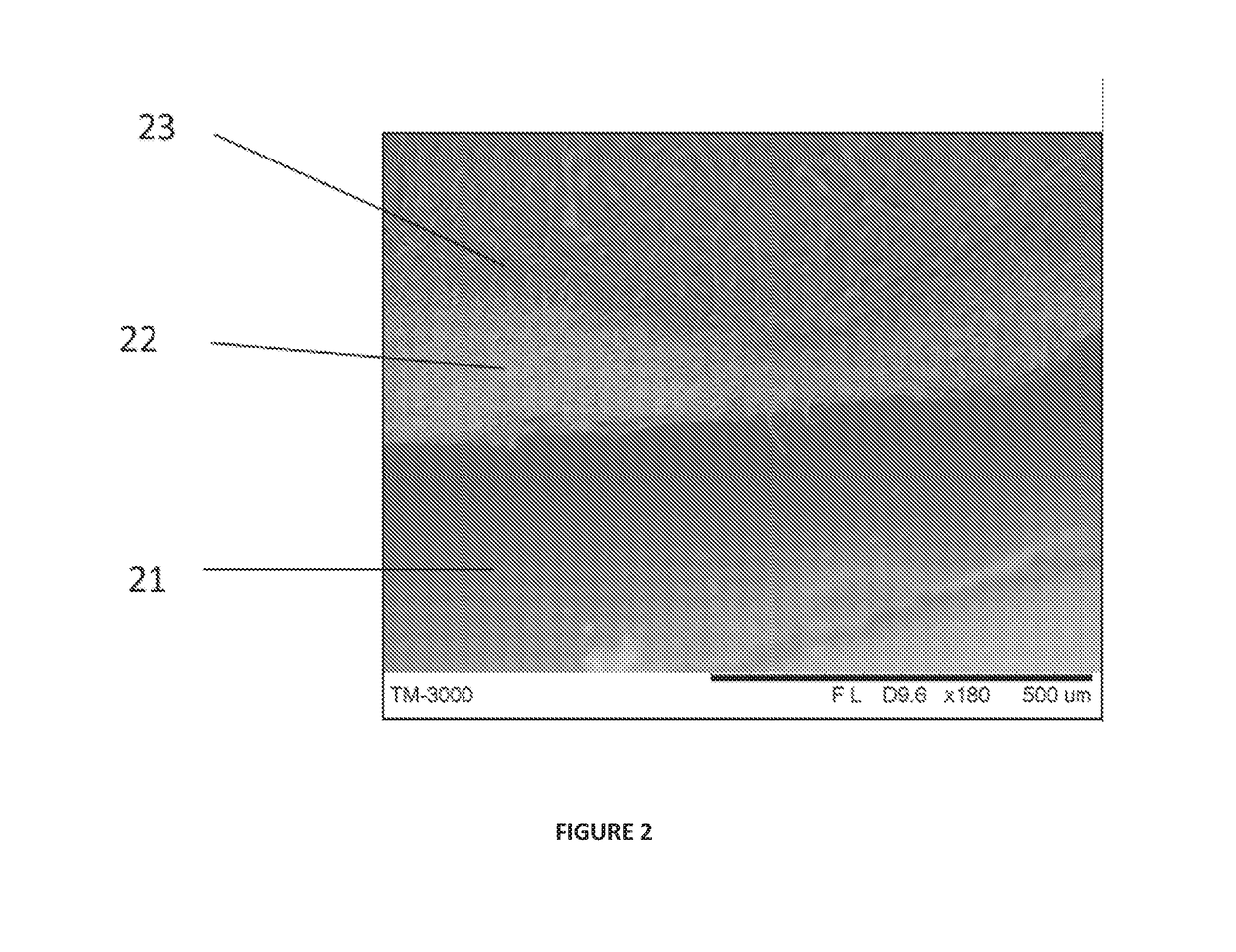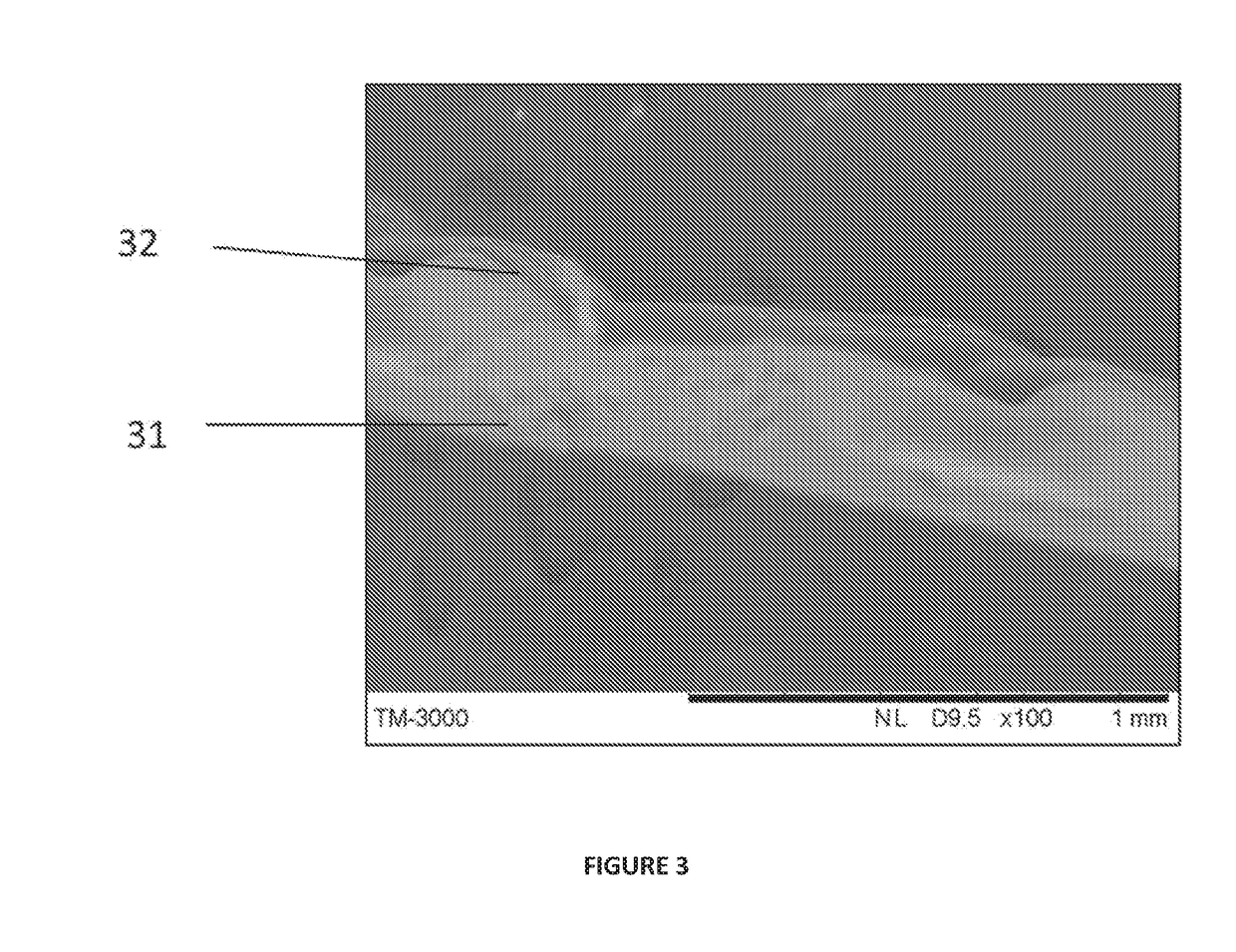Synthetic implant device replicating natural tissue structure and methods of making same
a synthetic material and implant device technology, applied in the field of composite implants, can solve the problems of lack of biological activity, limited ability to elicit beneficial biological responses, and difficulty in repairing and replacing tissues,
- Summary
- Abstract
- Description
- Claims
- Application Information
AI Technical Summary
Benefits of technology
Problems solved by technology
Method used
Image
Examples
example 1
[0167]An implant was prepared by dissolving an elastomeric, bioabsorbable polyaxial block copolymer, polymer 1, in chloroform overnight by continuous agitation to form a five (5) wt % solution. Following dissolution of the polymer, D&C Violet #2 was added at 40 ppm and agitated to form a homogenous tinted solution. The dissolved solution was volumetrically measured out and cast into an inert tray at a concentration of 0.5 mL / cm3. The tray was covered with an inert, permeable cover to slow evaporation of the solvent.
[0168]After overnight (12 hr) evaporation, a solid elastomeric polymer film of 0.3-0.6 mm thickness, length of 100 mm, and width of 100 mm was obtained. The resultant film was fixed to a grounded stainless steel collector drum of diameter 12.7 cm and 25 cm in length. Two polymeric solutions were prepared by dissolution in hexafluoroisopropanol (HFIP). Solution 1 comprised of polymer 1 dissolved at a concentration of eight (8) wt %. Solution 2 comprised of linear poly(diox...
example 2
[0173]A composite implant device of the invention was prepared. The implant device displays an impregnated reinforced structure. The implant was prepared by the warp knitting of multifilament (filament count 10, denier 180 g / 9000 m, tenacity of gf / denier) yarn comprising greater than 90% glycolide content into a Tricot pattern producing a porous mesh with a thickness of 0.3 mm, areal density of 75 g / m2, and breaking strength N in both the machine and counter-machine direction. The mesh was coated with a polyaxial elastomeric bioabsorbable polyester polymer (polymer 1) coating. Polymer 1 was dissolved in chloroform overnight by continuous agitation to form a five (5) wt % solution. Following dissolution of the polymer, D&C Violet #2 was added at 40 ppm and agitated to form a homogenous tinted solution. The mesh was cut to 90 mm×90 mm in area and was centrally placed in an inert tray measuring 100 mm×100 mm×5 mm. The dissolved polymer solution was volumetrically measured out and cast ...
example 3
[0175]A composite implant device of the invention was prepared according to the following procedure. The implantable device of Example 2 was produced and further modified to incorporate fibrous elements on the roughened side of the implant device. The resulting implant device was fixed (secured) to a grounded stainless steel collector drum of diameter 12.7 cm and 25 cm in length. Two polymeric solutions were prepared. Solution 1 was made by dissolving polyethylene oxide (molecular weight of 20,000 Da) in deionized water at a concentration of six (6) wt %. Solution 2 was made by dissolving a poly(ether-ester) block copolymer in hexafluorisopropanol (HFIP) at a concentration of eight (8) wt %). The poly(ether-ester) was a triblock copolymer comprised of a central hydrophilic block derived from poly(ethylene glycol) (molecular weight of 12,000 Da) and flanking poly(ether-ester) blocks derived from para-dioxanone.
[0176]The polymeric solutions were volumetrically dispensed out of two sep...
PUM
| Property | Measurement | Unit |
|---|---|---|
| Fraction | aaaaa | aaaaa |
| Fraction | aaaaa | aaaaa |
| Diameter | aaaaa | aaaaa |
Abstract
Description
Claims
Application Information
 Login to View More
Login to View More - R&D
- Intellectual Property
- Life Sciences
- Materials
- Tech Scout
- Unparalleled Data Quality
- Higher Quality Content
- 60% Fewer Hallucinations
Browse by: Latest US Patents, China's latest patents, Technical Efficacy Thesaurus, Application Domain, Technology Topic, Popular Technical Reports.
© 2025 PatSnap. All rights reserved.Legal|Privacy policy|Modern Slavery Act Transparency Statement|Sitemap|About US| Contact US: help@patsnap.com



